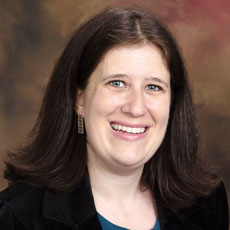
It’s no secret that long-term care has been behind the curve when it comes to technology adoption. We keep telling people to invest, that electronic health records are going to become a necessity, and that interoperability is important. Providers respond that there is no money.
But it’s a little more complicated than that. Gregory Alexander spoke about pitfalls and obstacles in implementing technology in long-term care during his McKnight’s Online Expo session on Wednesday. There’s the basic, such as that successful implementation depends on infrastructure. Alexander reminded listeners that systems have to allow transfers, be secure and support multiple disciplines. But where things often fall apart is when the clinical staff grows frustrated. How many of you have seen systems fail this way?
“We consider human factors to be an important part of implementation, including how satisfied people are with it,” he said. To examine why a technology product is or isn’t working, Alexander recommends asking these questions:
• How well does the application fit into the workflow?
• How quickly can someone learn to use the application?
• How well does the product help user avoid errors, or does it contribute toward bad consequences?
• How well can an end-user use the system if he or she has been away from it?
• How well does the end-user like using the system?
This all sounds simple, but let’s break down what could potentially happen with installing a new (hypothetical) sensor system. The CEO says, “This will help us prevent falls!” which everyone agrees is a good thing. Hooray.
But what if the application and system aren’t integrated into an electronic health record? How does the sensor system fit into the daily workflow of the unit?
Let’s assume you have figured out a plan, something like whoever hears the alert should respond. Now, how quickly can all staff learn how to use the sensor system, both in responding, turning off and documenting the alert?
Next, you have to address how this technology would make resident care better, specifically in this scenario by focusing on falls. Yet you also have to recognize that there can be unintended consequences with new systems. Loud alerts became all the rage in healthcare for some time before people realized the noise and occasional false alarms outweighed the benefits.
Then there’s the memorability factor. Nurses may work three 12-hour shifts. Will they be able to remember how to manage the sensor system on a week-to-week basis? What support exists? What if someone is gone for, say, three weeks?
Finally, does your clinical staff LIKE the new system? At this point, as an administrator, you may be mumbling something along the reality-show lines of “Who cares if they like it? I’m not here to make friends.” Fair enough, but when you give people a reason to believe in a system because it makes resident care better, or their jobs easier, you’ll get better results. As Alexander pointed out, technology that allows more time for resident care will likely help with staff retention.
If you missed his presentation, you can listen on-demand. When you click here to register, you also can log in to listen to today’s two presentations: The first will be on obtaining capital, and the second will be on the re-survey process, moderated by yours truly.
See you in the Expo lounge!
Elizabeth Newman is Senior Editor at McKnight’s. Follow her @TigerELN.




